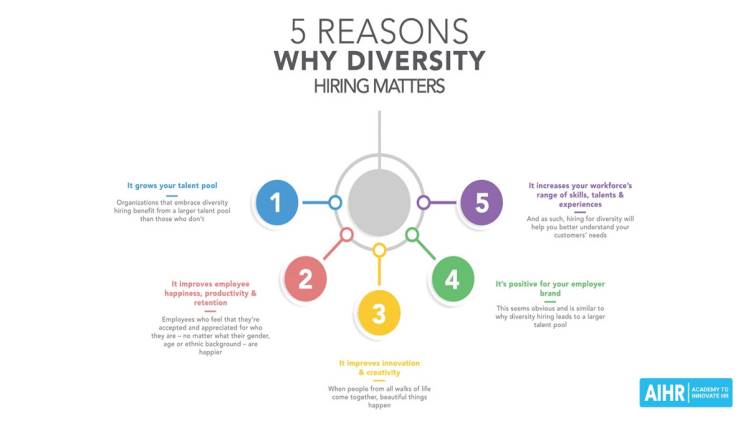Inclusive Recruitment Practices: Reducing Bias and Increasing Diversity

Creating a diverse and inclusive workforce is not only an ethical imperative but also a strategic advantage for organizations. Inclusive recruitment practices go beyond attracting diverse candidates; they aim to eliminate biases and provide equal opportunities to all individuals, regardless of their background. By fostering a workplace that embraces diversity, organizations can harness a broader range of perspectives, drive innovation, and enhance overall employee satisfaction. In this article, we delve into the significance of inclusive recruitment practices and strategies to reduce bias while increasing diversity.
Understanding Inclusive Recruitment by INS Global
Inclusive recruitment involves designing and implementing strategies that ensure fairness, eliminate biases, and promote equal opportunities throughout the hiring process. It aims to create an environment where candidates from all backgrounds feel welcomed, respected, and valued.
Strategies for Inclusive Recruitment:
- **Job Descriptions:**
Craft job descriptions using inclusive language that appeals to a diverse audience. Avoid gendered terms and focus on outlining skills and qualifications necessary for success in the role.
- **Diverse Sourcing:**
Expand your candidate pool by sourcing from a variety of channels, including online job boards, social media, diversity-focused platforms, and professional associations.
- **Blind Recruitment:**
Remove personally identifiable information (such as names, gender, and age) from resumes during the initial screening process to mitigate unconscious bias.
- **Structured Interviews:**
Use standardized interview questions to ensure consistency and fairness. This reduces the potential for biased or irrelevant questions that can favor certain candidates.
- **Diverse Interview Panels:**
Include individuals from different backgrounds in the interview panel. This provides diverse perspectives and reduces the risk of homogeneous decision-making.
- **Training for Interviewers:**
Offer training to interviewers on recognizing and addressing unconscious bias. This empowers interviewers to make more objective and inclusive decisions.
- **Assessment Tools:**
Use skill-based assessments and simulations to evaluate candidates’ abilities objectively, minimizing bias that can arise from personal perceptions.
- **Feedback and Transparency:**
Provide feedback to candidates on their application or interview performance. Transparency in the hiring process builds trust and enhances the candidate experience.
- **Employee Resource Groups:**
Engage employee resource groups (ERGs) in the recruitment process. They can provide insights on creating an inclusive environment and offer suggestions for attracting diverse talent.
Benefits of Inclusive Recruitment by INS Global Consulting
Inclusive recruitment practices offer numerous benefits to organizations:
- **Enhanced Diversity:** Inclusive practices attract candidates from a wide range of backgrounds, leading to a more diverse workforce.
- **Innovation and Creativity:** Diverse teams bring varied perspectives, fostering innovation and creative problem-solving.
- **Improved Employee Engagement:** An inclusive workplace promotes a sense of belonging and increased engagement among employees.
- **Reduced Turnover:** Inclusive environments tend to have lower turnover rates, as employees feel valued and supported.
- **Positive Reputation:** Organizations known for their inclusive recruitment practices are more attractive to top talent and customers.
- **Broader Market Reach:** Diverse teams understand and cater to a wider customer base, expanding the organization’s market reach.
Addressing Bias in Recruitment:
Unconscious biases can hinder the diversity and inclusivity efforts of organizations. Here’s how to address bias in recruitment:
- **Awareness:** Educate hiring managers and teams about unconscious bias and its impact on decision-making.
- **Standardization:** Implement standardized processes and criteria for evaluating candidates to minimize subjectivity.
- **Diverse Panels:** Ensure that interview panels consist of individuals from different backgrounds to counteract bias.
- **Structured Interviews:** Use structured interview questions that are job-related and devoid of bias.
- **Data-Driven Decision-Making:** Analyze recruitment data to identify patterns of bias and take corrective measures.
Conclusion:
Inclusive recruitment practices are essential for creating a diverse and vibrant workforce that drives innovation and success. By eliminating biases and providing equal opportunities to candidates from all backgrounds, organizations can build a culture of inclusivity that resonates throughout the employee lifecycle. With the benefits of diversity becoming increasingly evident, inclusive recruitment practices are not only a strategy for talent acquisition but also a strategic investment in long-term organizational growth and prosperity.





